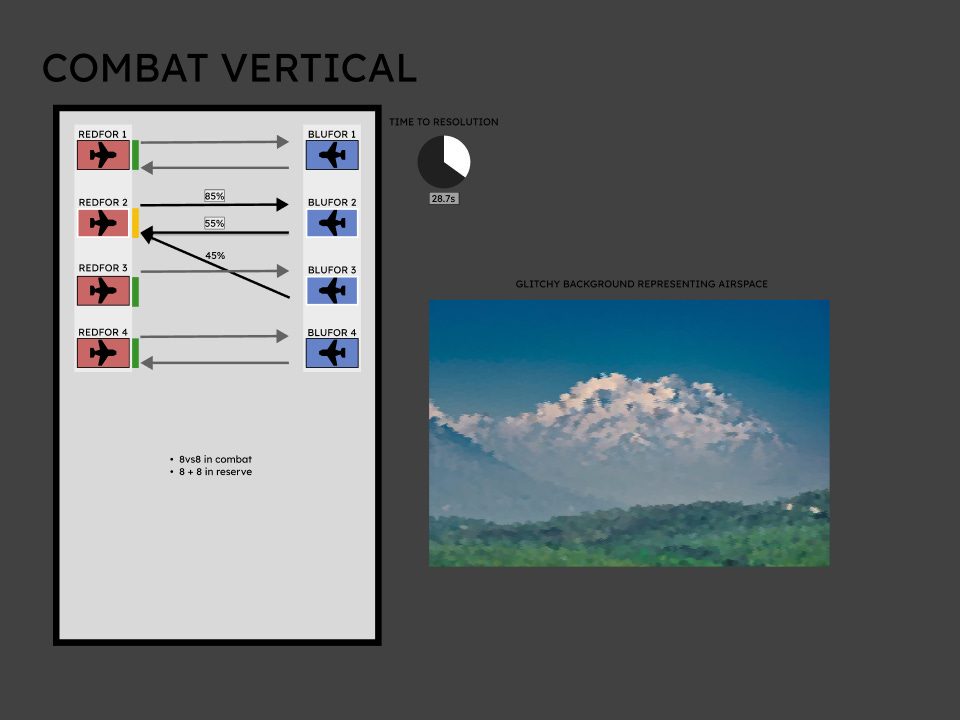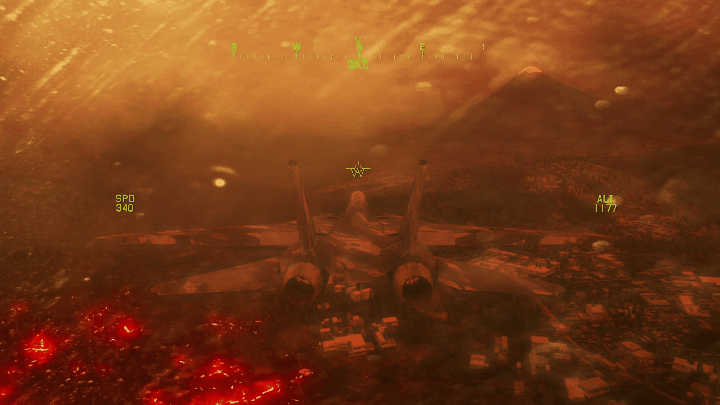Skies Returning #3: Culture, Interception
"Suddenly, they're on the receiving end of the bloodless Ace Combat protagonist's rampage—and they have to take them down by any means..." Yep, more descriptions.
Getting Culturally Educated and Organized
Well, this sprint went by incredibly fast. So fast, in fact, that I have to write this entry almost completely just before publishing it. A lot of events were planned over these two weeks and almost none of them were GameDev-related.
Using my six-month break from work (with two and a half months already behind me), I've been cramming in as much cultural education as possible—soaking up perspective and experience across visual arts, architecture, music, movies, photography. That meant sacrificing a few days I could've spent on development visiting museums, attending book clubs and events, etc. Or, in this case, sacrificing half the sprint entirely.
So, one of the most important figures I hadn't had time to research yet was Lunacharsky—the first Soviet Minister of Education. Since I'm trying to become an engineer of human souls, I have to learn as much as I can from the past to avoid making the same mistakes. I really thought that Lunacharsky was worth the time digging into, so I visited an exhibition dedicated to him. The exhibition was great, and the person himself was—honestly—a bit of a disappointment? I mean, the achievements of the early Soviet government are hard to overstate, and he played a large role in them, no question there. But leaving your wife of twenty years and a son for a nineteen-year-old ballet dancer!? Anyway, I made some notes and added some of his works to my reading backlog, but I'm not sure when I'll want to read them...
Also, a week ago I took a part in a leftist music festival as a photographer—the least experienced one as usual. And that turned out to be one of the most exciting things of this year. It was also the first time I used a camera, and that can be easily deduced by photos—the vast majority of them were crap (unfocused, tilted, noisy, overexposed). There were two reasons they turned out this way: cranking up ISO to 6400 because I was afraid to lose detail in darkness, and focusing on taking photos of performers and bands instead of capturing the atmosphere of the event. But after a post-mortem with my good photographer acquaintance, I can confidently say that I learned a lot from those 1400 photos.
These were my weak points, now it's time to talk about the strong ones. And the first is that I was focused for ten hours straight and tried my absolute best. Constantly trying to capture the best shot—even if it meant mopping the floor with my clothing to get the angle slightly above the performer's eye level, or doing some ridiculous acrobatics to take a photo from behind and not interrupt everyone's experience—it was fun. The other strong point concerns the photos that were actually good—and almost all of them were of the organizers. Paying attention to a single person (or a pair), constantly looking for the most important detail and capturing it the moment it comes without isolating them from the outside flow of events—that's something I can do surprisingly well.
How does this intersect with game development? Well, after acquiring all this knowledge, I can definitely say that implementing a photo mode for Skies Returning is a must—and I will actually understand what's happening and what's necessary. My experience framing and taking photos will help with creating cutscenes and, eventually, promotional material. And for this sprint, all of this took a significant chunk of my time—specifically four days of productivity. Two were spent for preparation and the event itself, and two more to recover from the agony I was in after the intense exercise.

Intercepting Something
Yep, after three entries of the blog, we're upping the quality to Heading 3. Now there's so much to talk about that we have to structure it a bit nicer... and maybe add even more gifs—I love them!
20 More Hours of Development
The first week was spent doing something else, but I had some time to work on the prototype during the second week. I think I averaged around two hours of development per day, with roughly 20-30 spent on the game and engine in total. It's, obviously, not a lot, yet, but it's a significant indicator that I'm moving in the right direction. I don't want to describe how tired I currently am (my mental health break didn't do anything to fix it, sadly), so for me to open Godot every day to fight with Control Nodes is huge.
So, let's go over the progress:
first, the progress is speeding up—every day I'm spending more time, and the time feels more engaging. I hope I'll be able to put in around 60 necessary hours next sprint to finally finish the initial prototype;
second, the UI battle is still ongoing—I have to spawn many nodes programmatically, so referencing everything, handling input, making them communicate between themselves in a logical, clear and expandable way is a challenge;
third, the engine is slowly becomes my friend rather than my enemy—now I understand that this is one-time challenge, so designing, creating and aligning UI elements is not as much of an issue anymore;

Dread
During the first week, I wrote a lot of content for the blog. Specifically, I wanted to go into details of Mechanics, Story and Setting—I'm designing games in this order, and I'll actually have to make an entry this summer to explain why (there's a very good reason for it!)—but I'm not ready to post them yet. Still, some of the content and introspection was insightful enough to actually talk about!
Spending some time coding and designing the game I had two important thoughts: first is that I was wrong about Synchronization as a theme, it's Coordination; and second, "Is there any special feeling I want to evoke in the player? How do I design for it?" The answer came from the design itself—from the number of allied/enemy aircraft, how they target each other, and how likely they are to deal damage.
I'm a bit disappointed that the UI is so hacky I don't want to put it in here, so I'll try my best to explain the combat loop in text again.
The player controls a squadron consisting of several flights on a map. When allied and enemy squadrons come within range of each other, combat begins. Currently, only two flights from each side can participate at once (up to 16 aircraft in total). The engagement has two repeating phases: planning and resolution. During planning, the player gives orders to allied aircraft—for example: attack a specific aircraft with guns or missiles, focus on defense, recover energy, or disengage. There's a limited time to give orders—once it runs out, allies without orders will decide their own course of action (often suboptimally, depending on how experienced they are). During resolution, these orders are executed. If any aircraft are still flying, the engagement returns to the planning phase.
Each aircraft (and each pilot) has three core stats: Attack, Defense and Energy. Attack is the offensive ability—how likely it is to damage the target. Defense is the opposite—how likely it is to evade attacks. Energy acts as a multiplier for ATK and DEF; it decreases each resolution phase representing, well, the loss of energy in a turn fight. The probability to hit depends on the ratio between ATK and DEF. Additionally, it's affected by the number of aircraft targeting an enemy—it's much harder to defend against two or three enemies on your tail.
So, here's a scenario inevitably emerging from these rules and a single question: What would a fight against an 'Ace' pilot look like?
The Player sees a new enemy squadron on the radar and moves to engage as usual. Once combat starts, they realize they're up against a single aircraft (or a small flight) and think that this should be easy—they've shot down many such stragglers before. But this single aircraft manages to evade every single attack and a couple of "turns" (I'm still searching for the right terminology) later, it starts to wreck havoc on their forces.
Suddenly, they're on the receiving end of the bloodless Ace Combat protagonist's rampage—and they have to take them down by any means. Throwing their best and their worst at them, delegating tasks so that the enemy can be occupied for a while longer, draining the Ace's energy by sacrificing pilots they've protected the whole game. All just to give someone a chance to fire the missile that hits.
If this scenario is designed or even presented incorrectly, it will evoke frustration. Almost shooting down the enemy but never actually doing it is pure hell and just unpleasant. But if everything is done how it should, it will evoke dread.
This sort of dread, in my experience, is a very special feeling a game can achieve only once, but each one left a permanent mark on me:
the first encounter with the Hunters in The Division: Survival—this experience seems to be universally shared if you take a look at YouTube comments under relevant videos; the design of one of the best forgotten DLCs is superb;
trying to take down Bugmaster in Kenshi with your squad of 20-somethings just to see their limbs fly and your crew of 15 hours bleeding to death, crying;
Consequence of Power in Project Wingman—the only time my hands felt physically weak from playing a game.
What's interesting is that this exact example will have to come full circle, with the allied pilots who survive to get enough experience rising to this exact level. But they still get to that point—not from their position as protagonists (they even aren't in this game)—but from playing by the same rules better than everyone else.
Interception
Finally, we're getting a title! Originally, thinking about the idea of a 2D RTS that can and will overwhelm the player by design, Project Wingman's Consequence of Power came to mind—but experienced from the other side and blended with Cold War. The project was codenamed 'Calamity', and it seemed okay for a while. But thinking further, it's not about the end result of getting overwhelmed, it's about the gameplay core, what leads to it—which is interception (interdiction?). And so, welcome, INTERCEPTION.
And thinking even more about how I'd like to name the series of games I'm doing to gain experience for Skies Returning, I came up with the "Skies Returning Experience Project" or SREP for short, which seems kind of neat.
A conclusion, or a new beginning?
Okay, so looking back at this entry, I think it turned out alright, but lacking? There was a lot more I could actually and confidently say about Interception compared to the previous sprint, and I could actually describe the gameplay because I'd coded more of it. Still, a lot of tell and not a lot of show continues to be the main problem.
In the end of the last entry, I promised to pull myself together for this one and to actually start reinforcing the point that ideas are almost worthless and only execution matters. Surprisingly enough, I sort of did it. I pulled myself together enough to get consistent results to talk about, but still not enough to be confident to show them. What I have in the end is actually a pretty unimportant and skippable entry—full of ideas without execution, thus proving the point. That is fun...
The last two weeks generated more things to write about than I could, such as my recent playthroughs of Ace Combat games, Interception's Design Pillars, the necessity of cooperative mode and more! I even had to drop the Psychology section (it's going fine, by the way!) to avoid exceeding the word limit. Hopefully, I'll be able to write it all even better and faster to expand that limit.
Thank you for reading, I truly appreciate it!
Alex Rakitsky
2025-05-16

